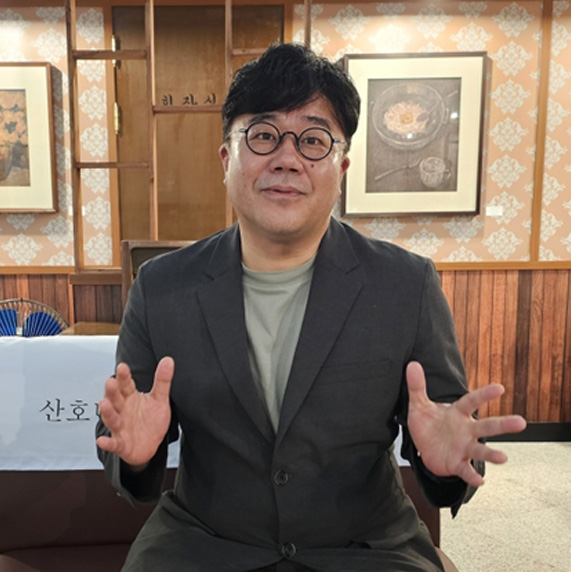본문
“Drifting; A device through which Jeju becomes the center and looks into the civilization.”
[Interview] Lee Jong-hoo, Artistic Director of the 4th Jeju Biennale
Island,
Jeju. The people who lived here were highly skilled in handling boats. They
were good at building and operating boats. Historical records such as Goryeosa
and the Annals of the Joseon Dynasty attest to these qualities of Jeju people.
Perhaps it was the destiny of those who lived on islands. But in return, they
had to face death. No matter how well the boats were built, it was difficult to
overcome high waves and strong winds. Some died, and others drifted on the sea
in broken boats. Was it only the people of Jeju? No. All who sailed the seas
experienced the same. Some who left Jeju drifted away, and people from other
regions also drifted and set foot on Jeju’s shores
Drifting is an extreme situation that crosses the boundary between life and
death. Yet, there is something remarkable about drifting. It led to movement
between different regions and became a tool that forced cultural exchange. The
4th Jeju Biennale (November 26, 2024 – February 16, 2025) has not overlooked
this. The Jeju Biennale has adopted the theme of 'The Drift of Apagi'
and aims to offer an opportunity to understand drifting as a cultural phenomenon.Apagi
appears once in historical records. There is a mention of Prince Apagi
of Tamna in the Nihon Shoki
(Chronicles of Japan). The Nihon Shoki
records it as follows.

Image source= Media Jeju
"Tamna sent Prince Apagi and others to offer tribute for the first time (耽羅始遣王子阿波伎等貢獻).“ (Nihon Shoki, Vol. 26, Empress Saimei, May 23, 661)
Why did Apagi have to go to Japan? The reason lies elsewhere. When a Japanese envoy to the Tang Dynasty was returning, they ended up drifting and arriving in Tamna, where the incident occurred. The Japanese envoy’s group drifted for eight days and nights before safely arriving in Tamna, where they met Apagi and his companions.
Apagi then followed the Japanese envoy back to Japan. This is a historical moment that shows how drifting led to cultural exchange.It’s refreshing that the Jeju Biennale has introduced ‘drifting’ as a keyword. However, the Jeju Biennale still faces major challenges ahead.
To continue like other biennales, it will need an independent organization, but currently, it lacks such a structure. To address these questions, I met with Lee Jong-hoo, Director of the Jeju Museum of Art and Artistic Director of the Jeju Biennale.
Original source: Media Jeju, Reporter Kim Hyunghoon
https://www.mediajeju.com/news/articleView.html?idxno=353675

























